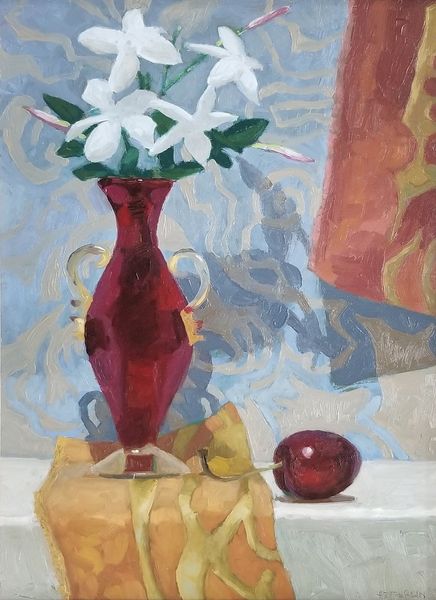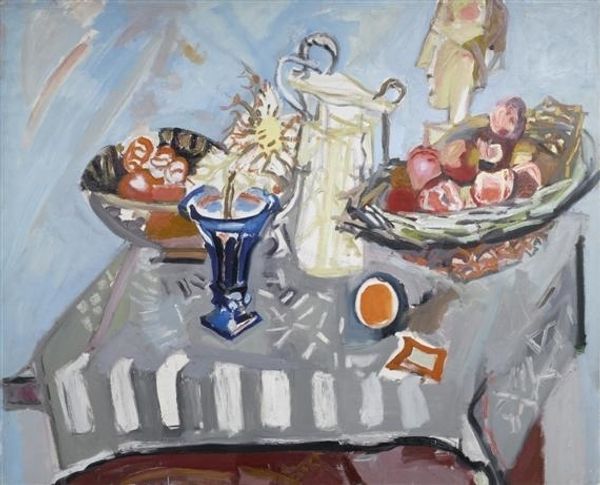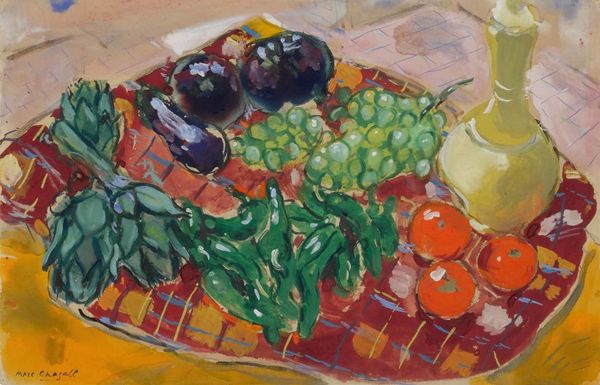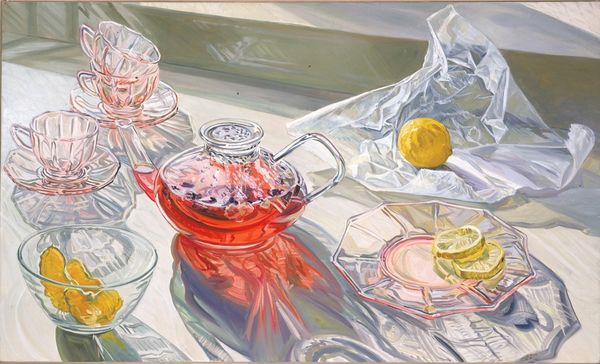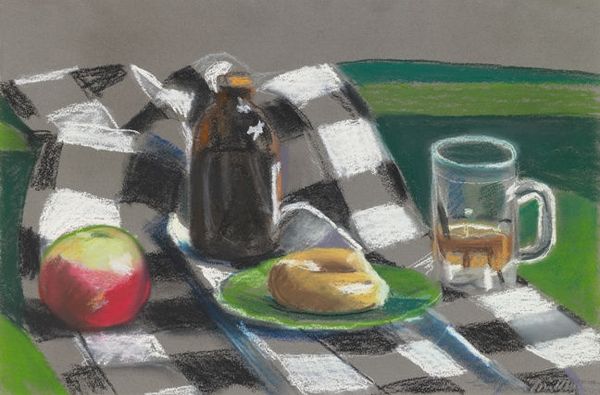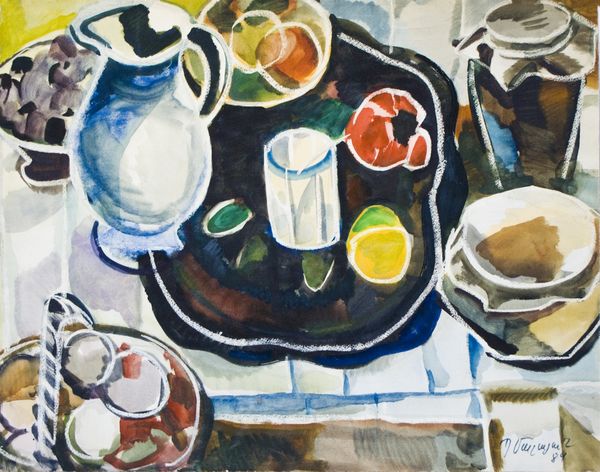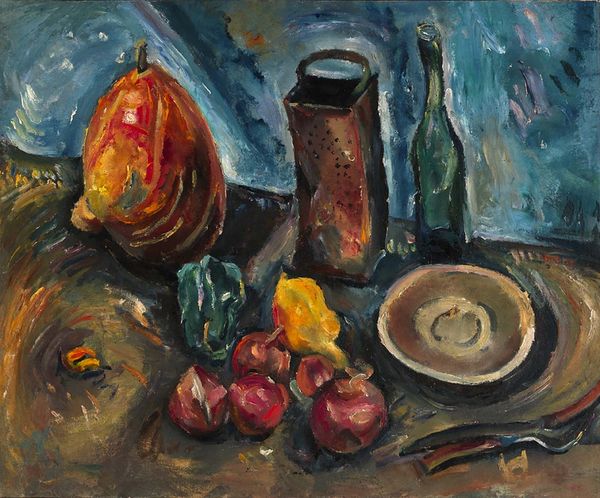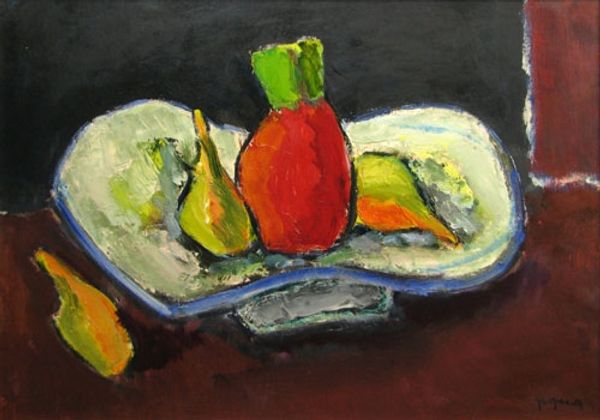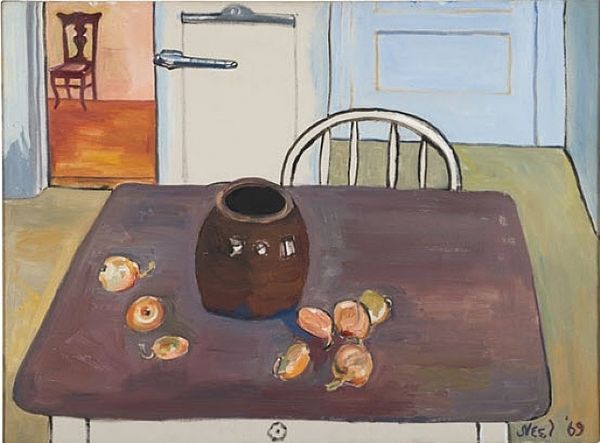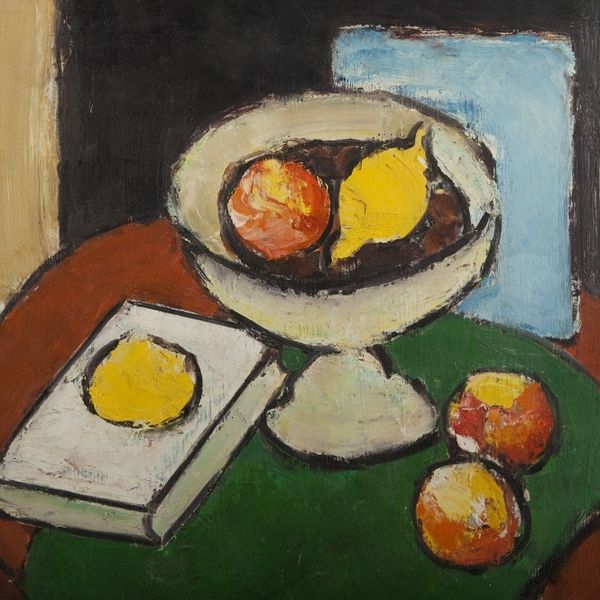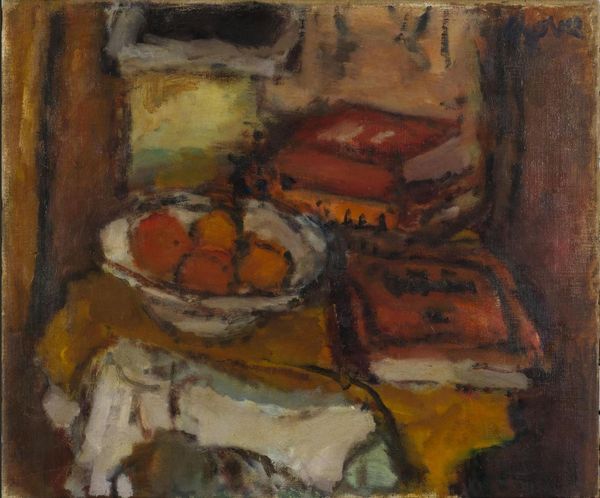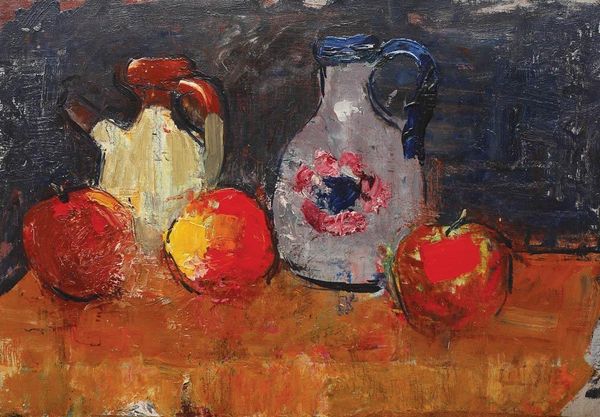
painting, oil-paint
#
gouache
#
painting
#
oil-paint
#
oil painting
#
painterly
#
modernism
#
realism
Copyright: Enrique Grau,Fair Use
Curator: I find this scene rather comforting, it’s simple. The first things that jump out are these wedges of watermelon, they dominate the canvas like ruby crescents. They really draw you in, don't they? Editor: Absolutely. Immediately I'm considering the social implications of displaying something like watermelon, both for its cultivation by enslaved populations, and the racial stereotypes that surround its consumption. It brings that history right into the present, onto this checkered cloth… which, in itself, implies labor—textile production, trade. Curator: I like your direction there, but I wonder if it's as pointed. Maybe that's for us, looking at it now. It could very well be about simply savoring everyday beauty and celebrating bounty, as the title suggests, *Mesa con Frutas*, “Table with Fruit,” made in 1962, is a feast for the eyes painted by the Colombian artist Enrique Grau. Editor: True, I think there's space for both readings. Look at the brushstrokes! Notice how the material execution renders both opulence and decay: oil paints layered thickly, simulating the lush, tropical nature of the fruit on one hand, while capturing the fleeting, temporal quality of sustenance. And the context here is key: Oil-based paints became extremely affordable at this point. This affects availability of the medium for both consumers and artists alike! Curator: Ah, yes, it’s clear you see the material transformation in art during that era. Thinking about my initial viewing experience—I noticed that although the fruits are vibrant, they’re presented on a weathered table with silverware that’s seen better days; I am very touched with the still-life in Grau’s hand and find them very accessible. There's almost a humble reverence in the presentation. A glass, perhaps filled with water, completes a silent communion of sorts. Editor: Yes! It’s not about excess here, it is much closer to being an ordinary reality. These muted backgrounds and humble objects ground the scene, making the materiality of daily life—the act of painting—become the art itself. The art then becomes deeply human. It allows us to explore the layers of history imbued in a still life, to analyze how material choices and cultural significance shape a work of art. Curator: Indeed. We've come from initial reactions to deeper interpretations! How wonderful that art allows for such journeys. Editor: Yes, it all really makes you appreciate the layers that can be decoded through even such an intimate still life.
Comments
No comments
Be the first to comment and join the conversation on the ultimate creative platform.
